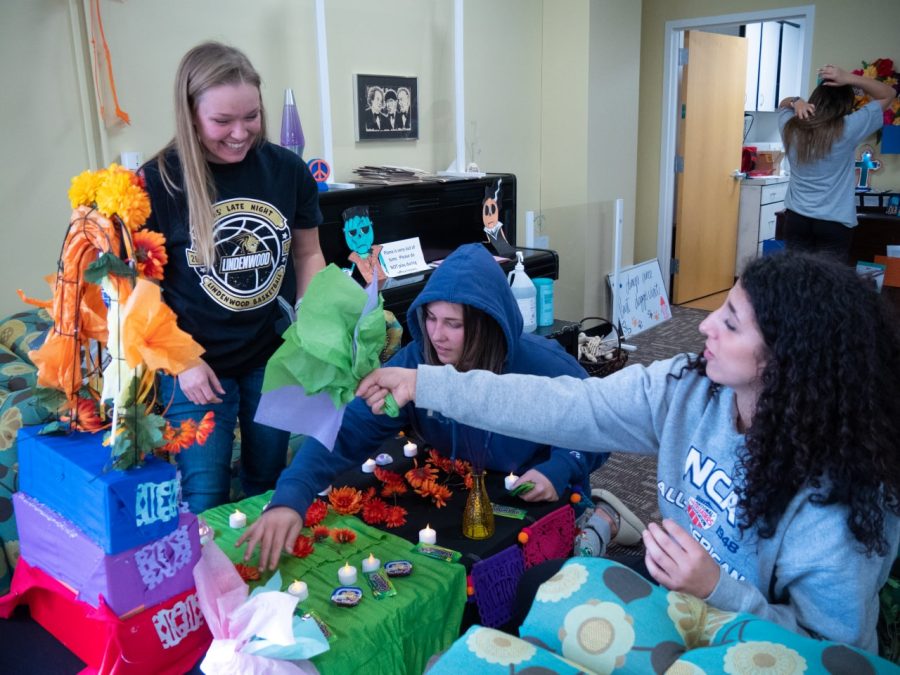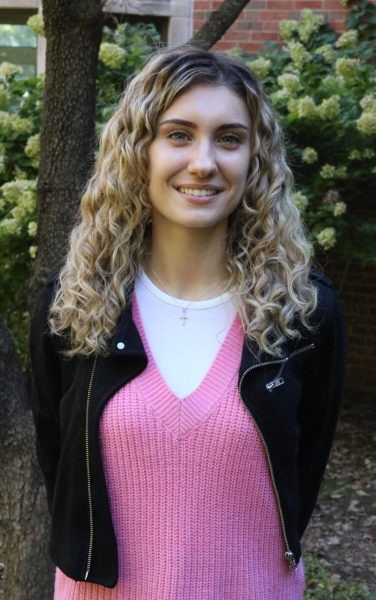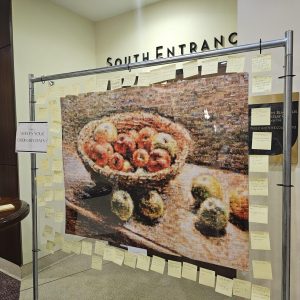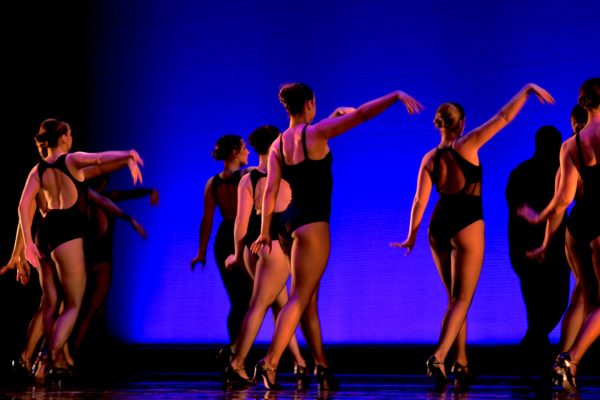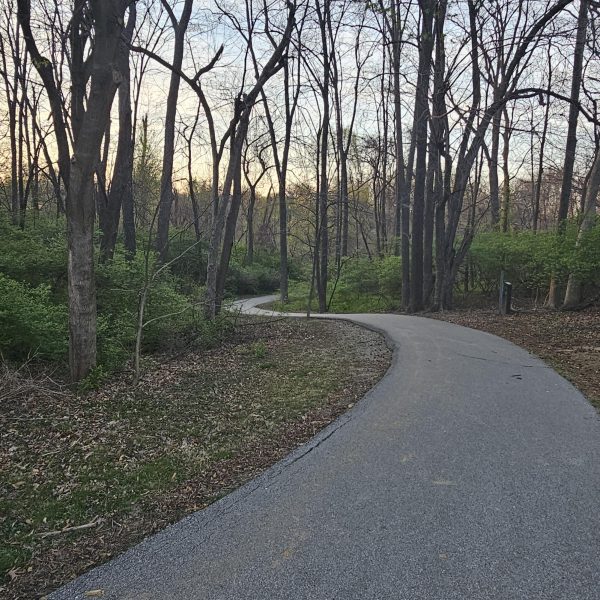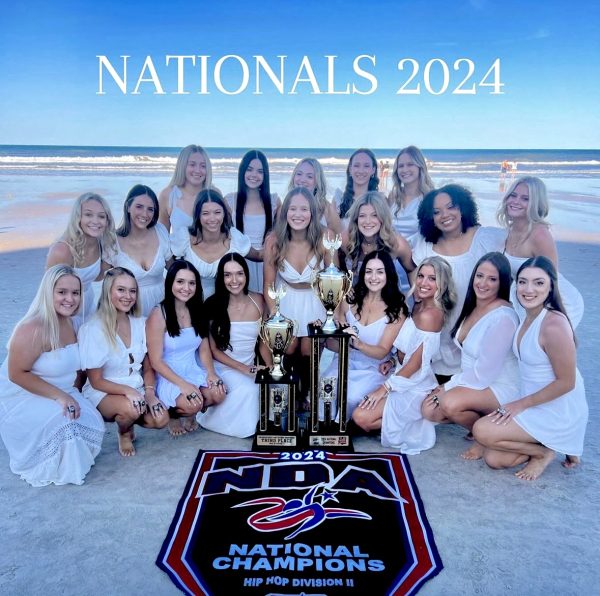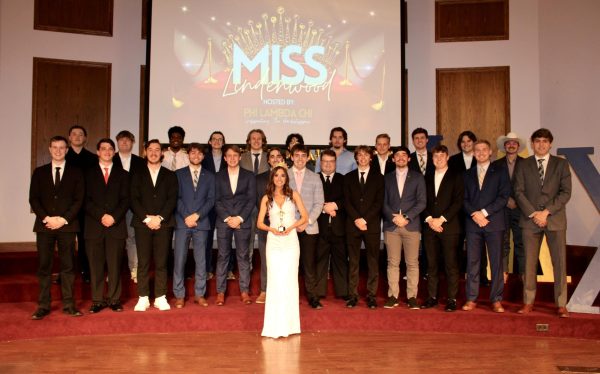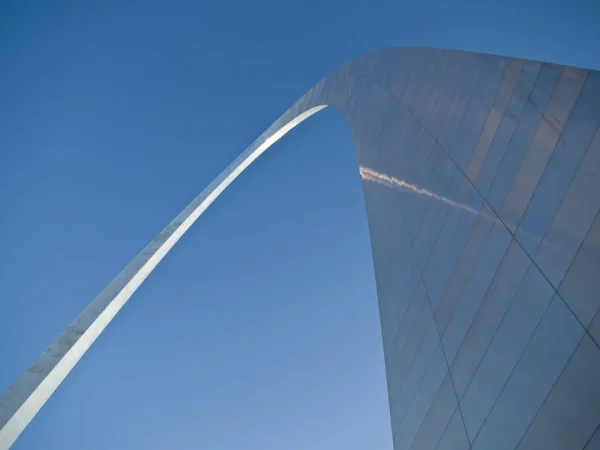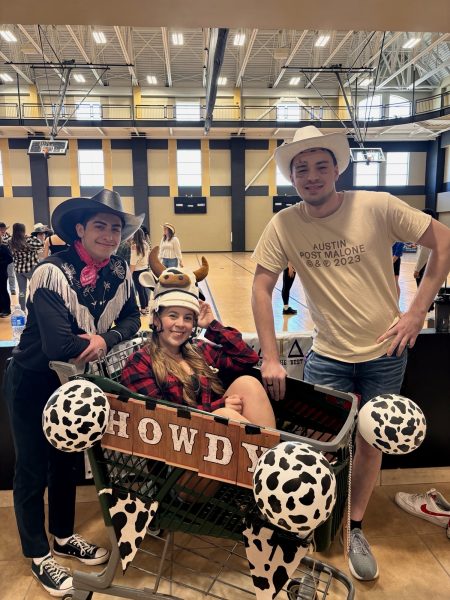How Lindenwood students celebrated “Día de Los Muertos”
Photo by Phoebe Pinkner
Lindenwood students prepare the altars in McCluer Lounge on Nov. 1
November 3, 2022
Lindenwood University students had a chance to celebrate Dia de Los Muertos and create altars on Tuesday, Nov. 1.
Dia de Los Muertos, or “Day of the Dead” in Spanish, is a Mexican holiday celebrating a special symbolic relationship between life and death.
According to History.com, the holiday dates back to three thousand years ago. This two-day holiday (Nov.1 – Nov. 2) is a way to honor the dead and remember their lives.
“There’s a tradition this time of the year, it is believed, that the gate between the world of the living and the dead is open,” professor of the Spanish College of Arts and Humanities Maite Nunez-Betelu said. “People believe if they make these altars and put the pictures of their relatives, they will come to visit.”
Those celebrating Dia de Los Muertos prepare altars beforehand, making sure essential details about the person are included. Items such as a photo of the relative/relatives, salt, favorite snacks, painted skulls, and water are presented on the altars.
“It is believed that because the relatives are traveling so far, they will be thirsty and need water,” Nunez-Betelu said.
Students that created the altars are learning about Spanish-speaking countries, their cultures, and traditions in the Hispanic Cultures class. However, students also learn about groups of indigenous ethnic groups such as Mapuche, Aymara, Quechua people, and the Basque.
“Since this is a cultural class, I thought this would be a good idea to learn about these traditions by students making their own [altars],” Nunez-Betelu said. “The altar is a mix of the indigenous cultures and also catholicism.”
Each altar has multiple levels that can go up to seven. The first level represents the earth, the second one is heaven, and the third one is purgatory.
Lindenwood senior Olivia Pilsing who created one of the altars admires the Hispanic culture for taking the topic of death to another level, bringing it a different perspective, and a new color.
“I absolutely love how the Hispanic culture and others who participate in this holiday view people’s passing,” Pilsing said. “In America, we view death as death. I love that time is taken to celebrate the lives of those who have passed and remember all of the good they did while they were in the world.”
The three altars in the McCluer Lounge will be showcased until Monday, Nov.7, when the voting for the best altar ends.
Students who created the altars encourage visitors to pick their favorite altar, take a photo, and email it to [email protected]. The winner of the project will be announced on Tuesday, Nov. 8.



